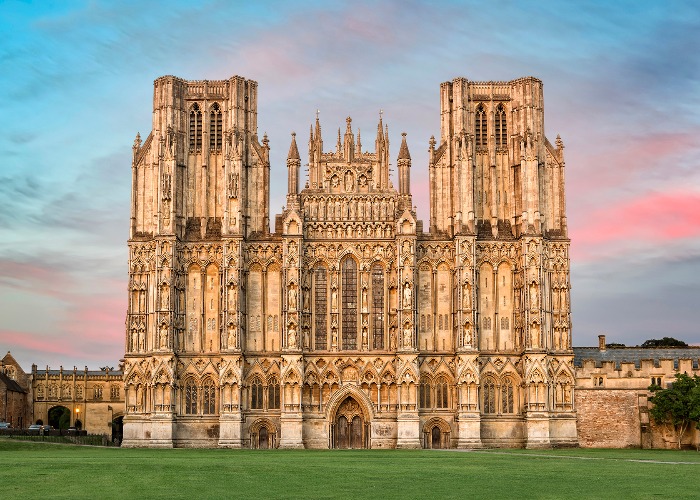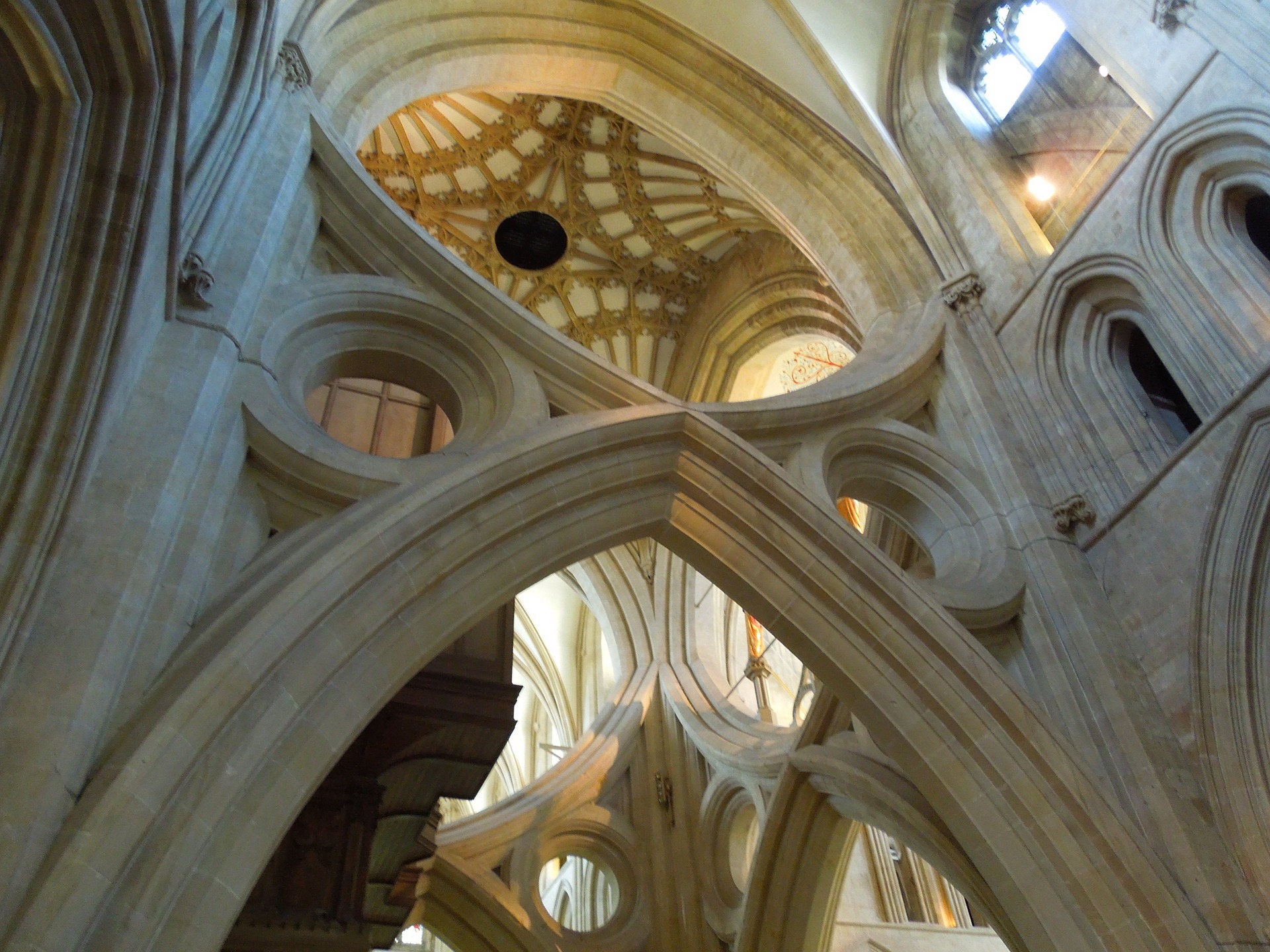Small but mighty: the top things to do in Wells

England’s smallest city packs a punch. Here’s how to spend a beautiful weekend in Wells.
Wells has some curious claims to fame: it’s home to a small bevy of swans who have been trained to ring a bell for food and it has the oldest residential street in Europe, Vicar’s Close. The latter was built for the holy men of the cathedral to have safe accommodation away from the temptations of the town and there’s even a bridge that gives direct access to the cathedral grounds.
It was thanks to its cathedral that tiny Wells was granted city status in early medieval times. And today, tucked away in the Mendip Hills, this small yet beautifully formed destination has a busy market square, pretty cobbled streets and striking medieval architecture. Surrounded by countryside, it’s an ideal base for nature lovers and hikers, as well as those wanting to explore the nearby Cheddar Gorge, Bristol or Bath.
Here are the top things to do in Wells over a weekend.
Friday
Check-in to: The Swan Hotel. Just a 10-minute walk from the bus station, this Best Western hotel has a boutique feel and brilliant views of the cathedral. Rooms are individually decorated and the courtyard garden is a delight in summer.
Eat at: The Subhouse on Princes Street. Casual, no reservations required and with communal tables, this is a great hang out specialising in burgers, pizza and mac and cheese.
Enjoy cider at: The City Arms. You’re in Somerset, so there’s no time like the present for a delicious pint of cider (or whatever you fancy) at this former jail. You can even enjoy your flagon in one of the original cells.
Saturday
Shop: at the market. Every Wednesday and Saturday a market full of fresh produce, such as local cheeses, cider and charcuterie, takes place near the Town Hall. Stock up on local produce and browse the many handmade crafts on offer.
Stop for a coffee: at Liberty Café. Pair a coffee here with one of the fresh cakes to refuel after your tour of the town.
Lunch: at Ensemble. This stylish, modern restaurant serves up fresh, local produce in a two-course set lunch. It's a steal at £14.50 and includes fresh fish and plenty of vegetarian options. Desserts include a peanut parfait and a lemon posset.
Take a tour: of local filming locations. Wells is also famous as the set for Simon Pegg’s 2007 comedy Hot Fuzz and the Hot Fuzz Walking Tour will give fans the inside scoop. Enjoy it on selected dates at 2pm, starting in the Crown Inn – one of the movie’s locations.
Explore: the Bishop’s Gardens and cathedral. One of the wells from which the city gets its name bubbles up in the Bishop’s Gardens, where 14 acres of beautiful landscaped gardens make for a pleasant afternoon stroll. The Vicar’s Close has changed little during its 700-year history and the cathedral itself is considered to have the finest collection of statuary in Europe with 300 medieval statues still surviving. Don’t miss the aesthetically pleasing scissor arches.

Eat at: Goodfellows on Sadler Street. Splurge on the exceptional five-course seafood tasting menu which includes cod brandade, Brixham crab and sea bream with chorizo.
Time for a pint at: The Penn Bar at the Crown Inn. At one time this bar was its own inn and, in 1685, Quaker William Penn – the very man who gave his name to the American city of Pennsylvania – preached from an upper floor out of a window to the crowd below.
Sunday
Visit: a cider farm in nearby Mudgley. Lands End Farm, Roger Wilkin’s apple farm, is renowned for its cider. The maker himself is considered the ‘real Somerset deal’ and offers regular tours of his premises so you can learn about the cider-making process.
Travel on to: the Glastonbury Tor. Rising above the Somerset Levels is the famous Glastonbury Tor. Only seven miles from Wells, it has views over a vast countryside and was considered a sacred site in pre-historic times. Topping the Tor is a roofless 14th-century tower which is all that remains of the former church.
Viewed up close, the Tor’s subtly terraced slopes seem to be the remnant of a Neolithic labyrinth. The Celts called it Ynys Witrin (Isle of Glass) and believed it was a gateway to the underworld. Later legend has it that the Tor is the Island of Avalon, burial site of King Arthur.
Comments
Be the first to comment
Do you want to comment on this article? You need to be signed in for this feature